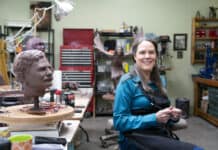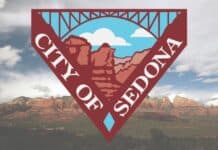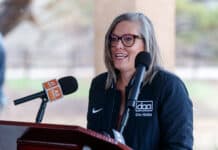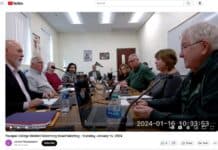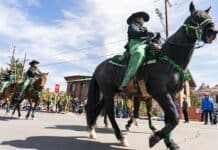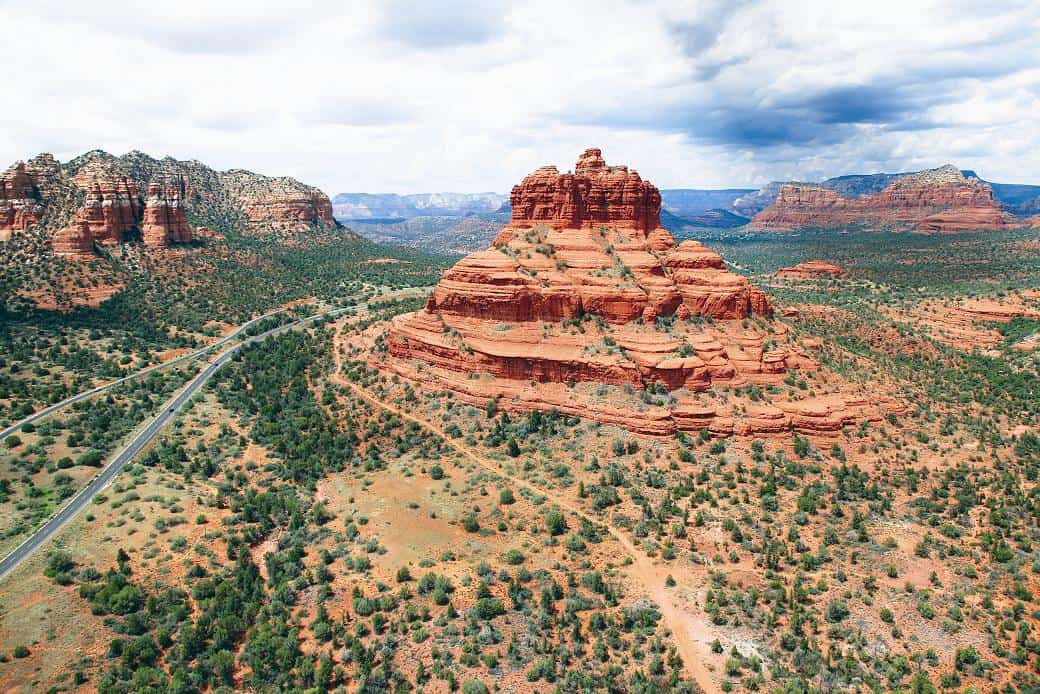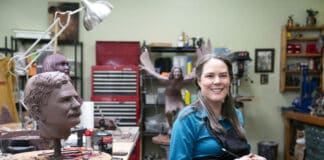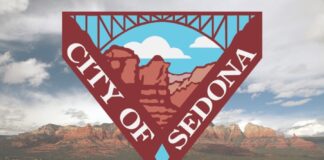What is a Sedona vortex?
Anyone who has been in Sedona for more than a few days has likely asked or been asked that question. Some claim aliens installed a giant crystal under Bell Rock. Others say Bell Rock itself is an alien spaceship or transdimensional portal, hence the reason humans feel an “energy” when visiting.
Pete A. Sanders Jr., a graduate of the Massachusetts Institute of Technology with degrees in biomedical chemistry, brain science and physiological psychology who lives in Sedona, says the word “vortex” is misleading.
“Vortex is just the word that stuck,” Sanders said. “They are meditative sites.”
Author of the 1981 book and 2014 DVD “Scientific Vortex Information,” Sanders said the word was coined in 1979 to describe meditative sites people have visited for decades.
Sedona’s spiritual heritage may actually go back thousands of years. Some archeologists believe that the Sinagua, the native people that built cliff dwellings beginning in A.D. 600 like Honanki and Palatki northwest of Sedona and Montezuma Caste near modern-day Camp Verde and then vanished around A.D. 1400 may have held the Sedona area as sacred ground. Because their habitation ruins ring Sedona, those archeologists feel the Sinagua lived on the outskirts and traveled to the red rock area for sacred ceremony.
In the 1960s word started to spread in the United States among spiritual seekers to visit Sedona’s “high energy meditation sites.” In 1979, Page Bryant identified the four most popular and accessible sites: the Bell Rock vortex, between Sedona and the Village of Oak Creek on the east side of State Route 179; the Cathedral Rock vortex across the road on the west side; the Airport vortex, on a knoll between Cooks Hill and Airport Mesa; and the Boynton vortex, in Boynton Canyon just north of Enchantment Resort. Sanders said that there are hundreds of other such sites around Sedona.
Color plays an important part in the meditative process, Sanders said. The red and burnt orange of Sedona’s rock formations put visitors into a contemplative mood while the green vegetation signals growth, rebirth and renewal.
While Bryant described the vortex locations as electric, magnetic or electromagnetic, and others call them “male or female” “yin and yang” or “positive or negative,” Sanders said the terms are misleading as there are no measurable electric nor magnetic fields located at the sites. Instead, he uses the terms “inflow” and “outflow.”
Upflow, electric or masculine meditation sites are mountains and mesa tops, like Bell Rock and Airport Mesa which enhance meditation and prayer. They give visitors a view of the surrounding area that psychologically gives people perspective, makes personal problems seem smaller and feel more manageable.
“Going to a higher perspective is the key element,” Sanders said.
Inflow sites are associated with valleys, canyons and caves and help with introspection, such as Red Rock Crossing at Crescent Moon Ranch Recreation Area, creekside near Sedona’s resorts, or the narrow canyons off of Dry Creek Road. These areas remove distractions of the outer world, limit one’s focus on the immediate surroundings and boost the significance of individual self in respect to the larger world.
These locations help visitors go inward and enhance meditation, introspection and contemplation, he said. Inflow sites help people heal hurts from their past and gain insight into their life and
purpose.
Sanders said that people don’t need to have spiritual guides or gurus to experience meditative powers around Sedona. Hiking guides can help people reach the Sedona vortex locations but the benefits of a meditative experience is up to the individual to discover themselves.
Believers feel that Sedona’s meditation sites make it easier to pray, contemplate, reduce stress and heal the mind and body. If you chose to visit them, observe the same respectful practices you would in a church, mosque, synagogue, temple or other sacred site:
- Maintain natural quiet as much as possible.
- Stay on designated trails and in designated areas.
- Do not leave or take anything from the sites.
Sanders founded the nonprofit Free Soul foundation in Sedona to help offer a scientific explanation about what a vortex is, where to find them in the Sedona, how to find them in your home area and how to use them through lectures from 1 to 2:30 p.m. Mondays at Los Abrigados Resort & Spa, 160 Portal Lane in Sedona. Admission is $15.
Call the Activity Center at (928) 203-5353 or Free Soul at (928) 282-9425 or visit FreeSoul.net for more information.



